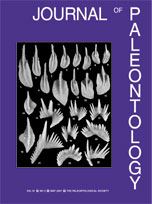Two leaves of Quercus simulata Knowlton from the Miocene of Oregon each show a new type of cynipid gall. Antronoides cyanomontanus n. sp. is described from six elongate and narrowly spindle-shaped galls, 7.0 mm long, and 2.0 mm wide tapering to a narrow tip. They have expanded rim-like bases with most galls scattered throughout the midsection adjacent to or partially straddling a secondary vein. Antronoides oregonensis n. sp. is known from 20 galls, 4.0–5.0 mm long, 1.8–2.0 mm wide and weakly clavate, appearing C-shaped with a rounded apex and circular to oval-shaped base. Galls occur primarily in the basal third of the leaf in a single file along each side of the midrib. Contrary to previous studies, we found A. schorni Waggoner and Poteet, A. polygonalis Waggoner, and A. cyanomontanus to be morphologically closer to Cynips cornifex Hartig on Q. pubescens (European white oak), whereas the new gall A. oregonensis most closely resembles X. clavuloides. The presence of Antronoides indicates the evolution and dispersal of Cynipini wasps was well underway in western North America by the Miocene. However, the new galls leave open the possibility that X. clavuloides and related species may have evolved during the Paleogene in higher-latitude mesic forests of western North America, rather than in the southern Great Basin as suggested by Kinsey and Waggoner and Poteet.
How to translate text using browser tools
1 May 2007
NEW MIOCENE OAK GALLS (CYNIPINI) AND THEIR BEARING ON THE HISTORY OF CYNIPID WASPS IN WESTERN NORTH AMERICA
DIANE M. ERWIN,
KATHERINE N. SCHICK
ACCESS THE FULL ARTICLE

Journal of Paleontology
Vol. 81 • No. 3
May 2007
Vol. 81 • No. 3
May 2007




